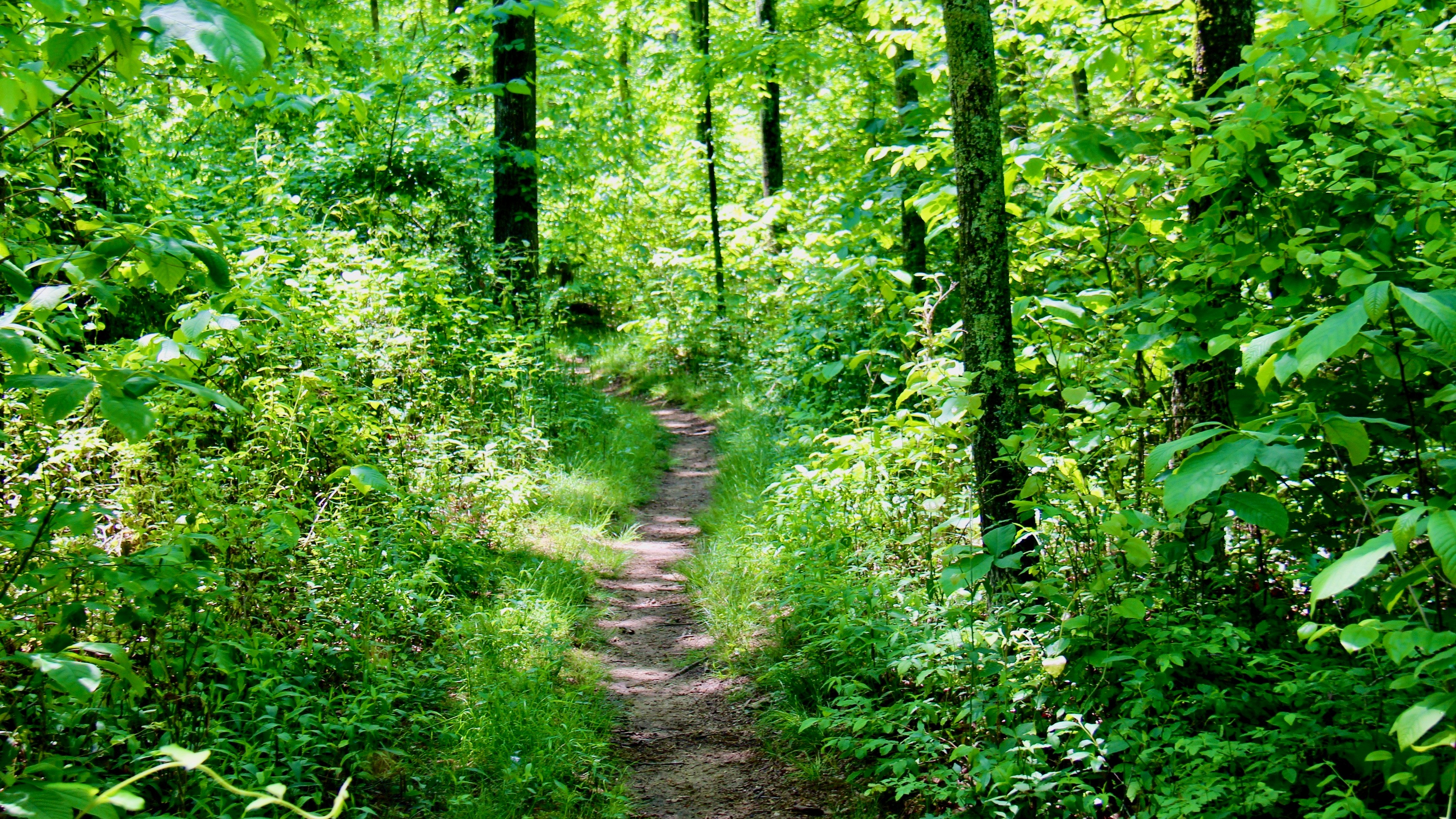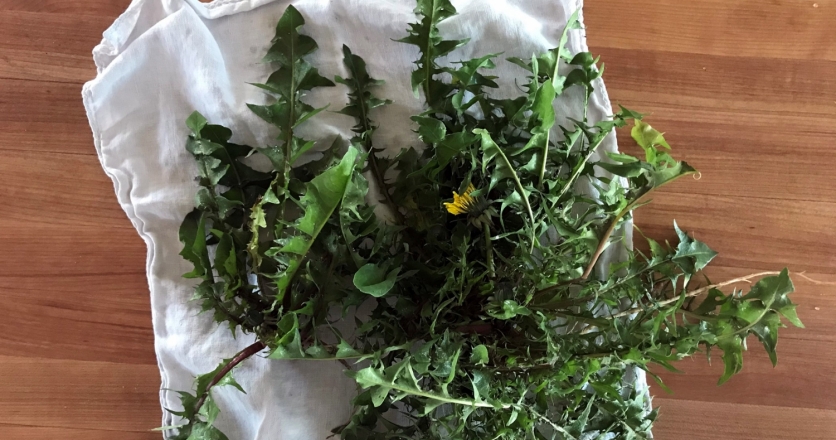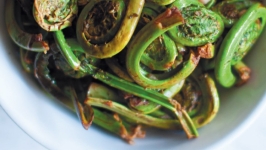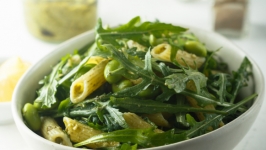Foraging for Fiddleheads, Rambling for Dandelions
The first greens of spring aren’t a whisper, they’re a shout. Audaciously neon, spring green is a color that’s intensely alive. Shooting out as buds, noses and tendrils, it instantly transforms the grey, dormant landscape of winter. It also has a taste, an unforgettable, fleeting freshness. For those in the know, this is the time to pull on your wellies, throw a basket over your arm and get to greens hunting. You don’t have to go very far. Along roadside ditches, in low brambly woods, you can gather a fine dinner full of April’s sharp and vibrant flavors.
In Kent County, Maryland’s least populated county, this kind of weeds-for-supper adventure is easy. With open country in any direction, a slow walk down pretty much any wooded back road will turn up all sorts of tender little delicacies. Some foragers are wild for roadside asparagus, others pine for understory morels. Me, I’m a stalwart dandelion and fiddlehead fan.
It’s a preference mostly borne out of proximity (read: laziness)— within 100 yards of my front door there are ample stands of both. But it also comes from a historian’s wistful hankering to have timeless experiences. As I’m snipping the heads off of ostrich ferns and pulling the emergent leaves from dandelions, I’m performing a very old dance, a ritual followed by generations as they greeted spring’s renewed abundance.
A thousand years ago, Chesapeake Native Americans sought the tightly furled fiddleheads along shaded bottoms. And in the Chesapeake’s colonial period, Europeans introduced their favorite springtime delicacy, the dandelion, to the region. The Africans they enslaved, and their descendants, heavily relied on foraged greens like dandelions, poke, and ferns, and modern soul food recipes like stewed collards speak to their enduring legacy.
These edible plants—free, abundant, and incredibly nutritious—remained vitally important as a post-winter superfood for centuries. It’s only in the last 75 years that supermarkets turned our heads from nature’s cornucopia to a seasonless, globally-sourced greens aisle. Along the way, we’ve lost something important. Greens hunting is a gentle experience that’s just as much about celebrating the environment as it is about filling our bellies. It’s long overdue for a reboot.
First time foragers will need to keep a few ground rules in mind to make sure that what you pick is both delicious and safe to eat. For dandelions, the key is to harvest early to avoid a bitter, astringent taste. Head out in mid-April to sunny locations—backyards or roadsides are ideal—and look for their distinctively serrated leaves (fun fact: the name ‘dandelion’ is a corruption of the French ‘dent de lion’ or lion’s tooth). Rather than uprooting the plant, carry scissors or pruners in your pocket and snip the leaves as close to the base of the stem as possible. Be sure to bring a basket or bag, since dandelion leaves cook down considerably and you’ll want to gather several large bunches for each person you’re feeding.
Fiddleheads require a little more finesse. There is no such thing as a ‘fiddlehead fern,’ rather, “fiddlehead” is a stage of growth that refers to the tightly coiled fronds emerging in early spring. Not all ferns are edible, so it’s important to look for one native in particular—the Ostrich fern. Ostrich ferns are large and stately, with fronds that resemble their namesake ostrich feathers. Their fiddleheads are roughly an inch in diameter and have a brown, papery, scale-like covering on the uncoiled fern and a smooth stem. The deep, U-shaped groove along the inside of the fern stem is a dead giveaway. Once you’ve spotted a prime patch of fiddleheads, gathering is easy. Just snip a few inches below the tight coil and drop into a basket. Fiddlehead season is fleeting, so gather as many as you think you’ll find while the getting is good.
At home, leave your muddy boots at the door. Then wash your greens thoroughly and store in a damp dish towel in the refrigerator to keep them fresh. In the meantime, start to strategize about the best way to highlight those tender leaves and ferns. I like to treat dandelions like spinach and fiddleheads like Brussels sprouts. I approach both with a respectful, Italian-style minimalism—the less adulterated their natural flavor, the better. My dandelions are destined for a quick sauté in white wine and a little garlic, served over fresh pasta with some healthy gratings of parmesan and a quick toss in pasta water to bring it all together. The fiddleheads I blanch to remove any bitterness, pat dry, then brown in some good unsalted butter with shallots.
Plated, the fiddleheads and dandelions retain their searing green color. I pour myself a glass of cold, crisp Sauvignon Blanc, put my napkin in my lap, and tuck in. That first peppery bite wakes up something inside that’s been sleeping since fall. Bursting with flavor and life-giving nutrients, this simple meal is appreciated with gratitude and gusto—a sentiment echoed over the centuries, as the Chesapeake’s past generations welcomed spring just like this.










